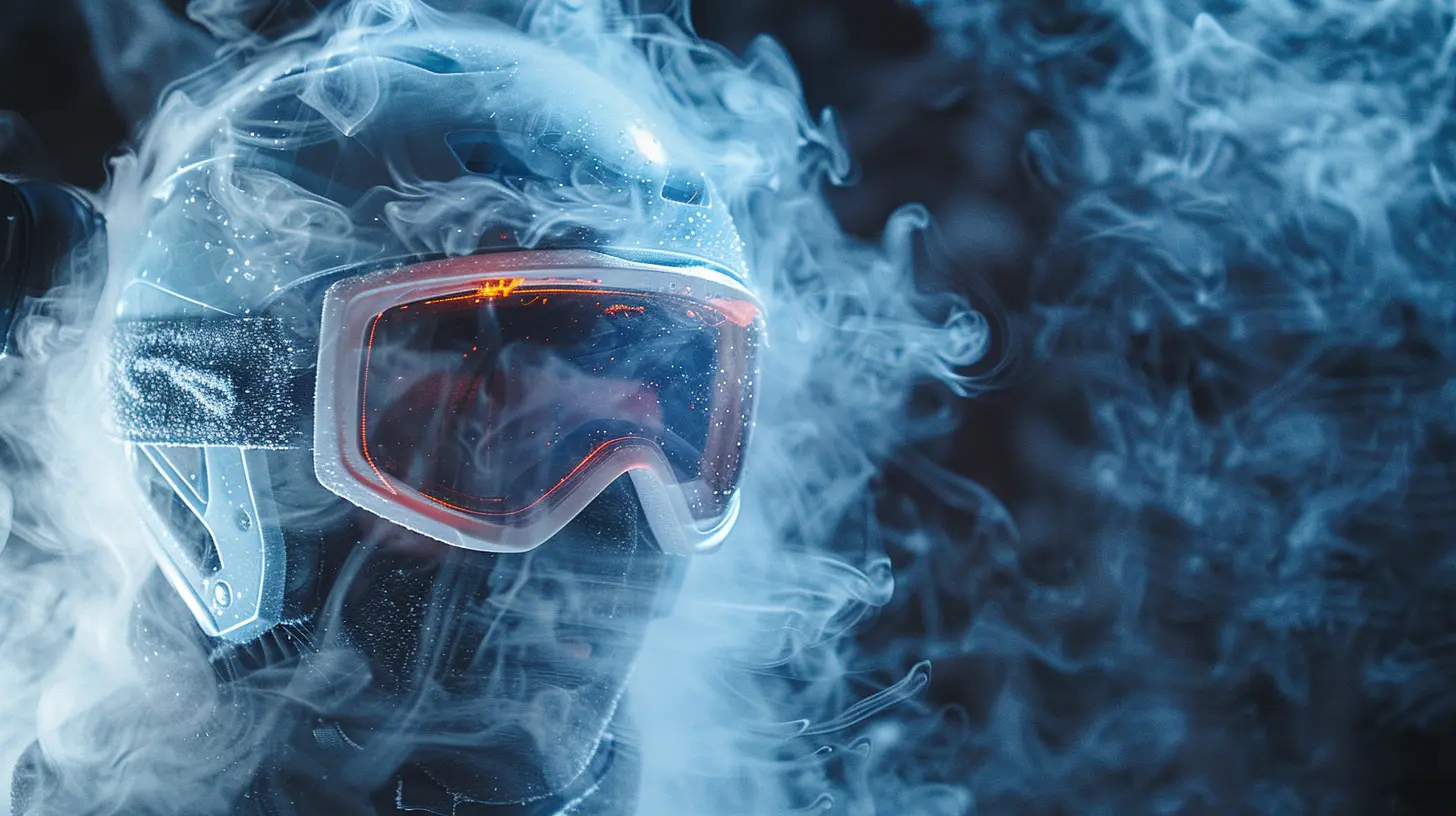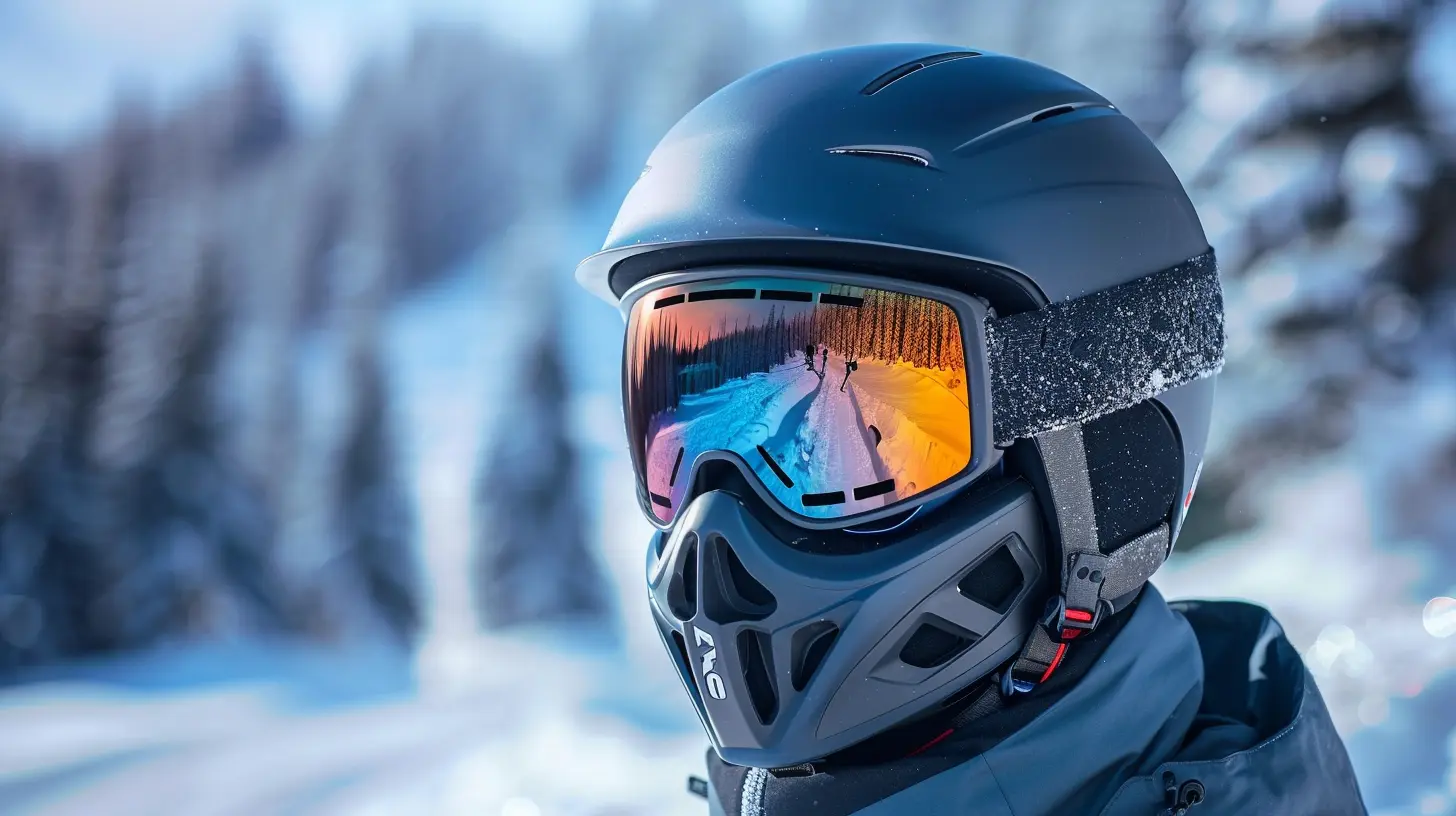How to Prevent Ski Helmet Fogging for Clear Vision
16 May 2025
Skiing down the slopes with crystal-clear vision is every skier's dream. But what happens when your helmet visor or goggles start fogging up? Suddenly, you're struggling to see, your confidence dips, and worst of all—you might be putting yourself at risk.
Helmet fogging is one of the most frustrating challenges skiers face, but the good news is that it's completely preventable. In this guide, we'll break down exactly why it happens and what you can do to keep your vision sharp all day long. 
Why Does Your Ski Helmet Fog Up?
Before jumping into the fixes, let's get to the root of the problem. Helmet or goggle fogging is caused by condensation—when warm, moist air from your breath or body meets the cold surface of your visor or goggles. Here are the main culprits:- Poor Ventilation – Without proper airflow, moisture gets trapped inside your helmet, leading to fogging.
- Overheating – Sweating inside your helmet means more moisture, increasing the chances of condensation.
- Breathing Too Close to the Visor – Warm breath rises and hits the cold lens, forming fog.
- Wearing the Wrong Layers – Overdressing causes excessive sweating, contributing to the moisture buildup.
- Not Using Anti-Fog Treatments – Some skiers skip anti-fog coatings or sprays, making fogging more likely.
Now that we know why it happens, let’s go over the best ways to stop the fog before it starts. 
1. Choose a Well-Ventilated Ski Helmet
Not all ski helmets are created equal. If you're constantly battling fog, your helmet’s ventilation might not be doing its job. A good ski helmet should allow air to flow freely, preventing moisture from getting trapped inside.What to Look for in a Fog-Resistant Helmet:
- Multiple Vents – Look for adjustable vents to help regulate airflow.- Integrated Goggle Venting – Ensures warm air escapes rather than fogging up your goggles.
- Moisture-Wicking Padding – Helps absorb sweat and moisture instead of trapping it inside.
If your helmet lacks proper ventilation, it might be time to upgrade. 
2. Wear High-Quality Anti-Fog Goggles
Your goggles play just as big of a role as your helmet when it comes to clear vision. Investing in high-quality, anti-fog goggles can make a world of difference.Features to Look for in Goggles:
- Double-Lens Construction – Creates a thermal barrier to prevent condensation.- Anti-Fog Coating – Many premium goggles come with factory-applied coatings that reduce fog buildup.
- Wide Vents – Helps warm air escape efficiently.
Pro tip: Never wipe the inside of your goggles with your gloves or cloth if they fog up. This can destroy the anti-fog coating and make things worse. 
3. Keep Your Helmet and Goggles Dry
Starting your ski day with wet gear is a recipe for disaster. If your helmet or goggles are damp from the previous day, they’ll fog up almost instantly when you hit the slopes.How to Keep Your Gear Dry:
- Air Out Your Helmet and Goggles After Use – Let them dry overnight in a warm, dry place.- Avoid Storing Goggles in Your Helmet – Trapping moisture inside can lead to more fogging.
- Use a Microfiber Cloth – Gently dab away moisture instead of rubbing.
4. Apply Anti-Fog Sprays or Wipes
Sometimes, a little extra help is necessary. Anti-fog sprays and wipes create a protective layer that prevents moisture from forming on your visor or goggles.How to Use Anti-Fog Products:
1. Clean Your Lens First – Remove any dust, dirt, or smudges before applying.2. Apply Sparingly – A light coating is all you need.
3. Let It Dry – Give it a few minutes before hitting the slopes.
This quick and affordable fix can be a game-changer.
5. Adjust Your Face Mask or Balaclava
Wearing a face mask or balaclava is great for warmth, but it can also direct your warm breath straight up into your goggles. This is a major fog culprit.How to Position Your Face Covering:
- Tuck It Under Your Chin – Instead of covering your nose, let your nose be exposed to direct airflow.- Use a Breathable Fabric – Look for moisture-wicking materials to help control condensation.
- Get a Mask with a Vent Hole – Allows exhaled air to escape downward instead of rising into your goggles.
A small adjustment in how you wear your mask can make a huge difference.
6. Avoid Overheating
Sweating inside your helmet is one of the biggest contributors to fogging. The more you sweat, the more moisture builds up, and before you know it, your vision is compromised.How to Stay Cool:
- Dress in Breathable Layers – Use moisture-wicking base layers instead of heavy, heat-trapping fabrics.- Unzip When You Get Warm – Regulate your body temperature to minimize sweating.
- Take Breaks in a Cool Spot – Step into a shaded area or remove your helmet for a few minutes to let your body cool down.
Staying cool keeps your goggles and helmet fog-free longer.
7. Store Your Gear Properly Between Runs
Taking a break at the lodge? Be mindful of where you place your helmet and goggles. Bringing cold gear into a warm lodge can cause condensation to form when you step back into the cold.Best Practices for Storing Your Gear:
- Leave Them Outside If Possible – Keeping them at a consistent temperature prevents condensation.- If Indoors, Store in a Dry Area – Keep them away from heaters or humid spaces.
- Avoid Placing Goggles on Your Helmet – Heat from your head can cause lens fogging when put back on.
By handling your gear with care, you'll minimize unnecessary fogging.
8. Upgrade to a Heated Visor or Fan-Equipped Helmet
If nothing else seems to work, technology might be your best bet. Some high-end ski helmets feature heated visors or built-in fans that help maintain clear vision.Benefits of Advanced Helmets:
- Built-in Heating Elements – Keeps the lens warm to prevent condensation.- Micro Fans – Pushes airflow through vents, reducing moisture buildup.
- Auto Anti-Fog Systems – Some models come with smart sensors that activate when fogging starts.
While these helmets tend to be pricey, they can be a worthwhile investment for frequent skiers battling persistent fog issues.
Final Thoughts
Nobody wants to deal with fogged-up goggles or visors in the middle of a thrilling ski run. By choosing the right gear, managing ventilation, and making small adjustments to your routine, you can keep your vision crystal-clear all day long.Got a favorite anti-fog hack? Share it in the comments and let’s keep each other fog-free on the slopes!
all images in this post were generated using AI tools
Category:
SkiingAuthor:

Onyx Frye
Discussion
rate this article
3 comments
Geneva McKee
Great tips! Keeping ski helmets clear enhances safety and enjoyment on the slopes.
May 27, 2025 at 3:39 AM

Onyx Frye
Thank you! I'm glad you found the tips helpful for enhancing safety and enjoyment while skiing.
Luma Myers
Great tips on preventing ski helmet fogging! Remember to invest in anti-fog spray, ensure proper ventilation, and keep your goggles clean for optimal visibility on the slopes. Safety and clarity make for a better ride!
May 25, 2025 at 12:15 PM

Onyx Frye
Thank you! Great points on using anti-fog spray and keeping goggles clean for safety and visibility. Happy skiing!
Ziva Banks
Great tips! Keeping vents clear really helps maintain vision while skiing. Thanks!
May 16, 2025 at 4:10 AM

Onyx Frye
Thank you! I'm glad you found the tips helpful for maintaining clear vision while skiing!



